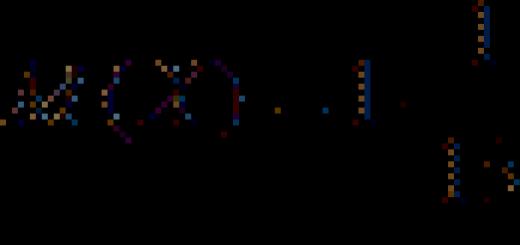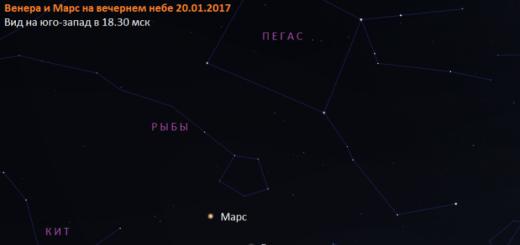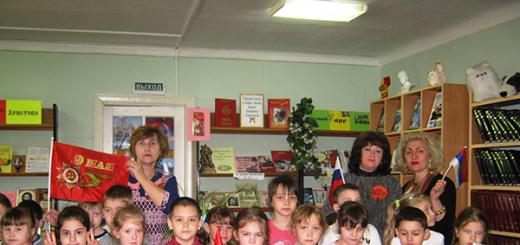"For the rest of my life
We have enough grief and sadness,
And those we lost -
For the rest of my life."
P. Fomenko
The failure of Operation Citadel and the depletion of German tank reserves led to the loss of established positions on a huge front from Smolensk to the Sea of Azov. However, the next stage of the armed struggle was the battle for the Eastern Wall. On the night of September 19-20, the 6th Army retreated to the Wotan Line. For the army, maintaining the “Wotan position” was a matter of life, since this position, located on the edge of the steppe, stretched across the elevated coastal areas of the river. Molochnaya and rows of hills near Eristovka and provided advantages by strengthening the area with an anti-tank ditch. From the east, advanced detachments of troops of the Southern Front approached the “Wotan Line”. The line chosen by the Germans near Melitopol was a strong defensive position from all points of view.
Retaining Crimea was the most important strategic and political task for Hitler. In particular, the position of Turkey, which smuggled chromium ore to the Third Reich, depended on the retention of Crimea. The troops of the 6th Army under the command of General K.-A. Hollidt covered the main supply line of the 17th Army in Crimea - the railway running from Zaporozhye through Melitopol. The infantry divisions of Hollidt's army were not in excellent condition, but quite combat-ready.
The presence of floodplains allowed the defense of the left flank of the German 6th Army with insignificant forces. Out of a total front length of 165 km, the enemy had the opportunity to concentrate the main forces and means in the center on a front length of about 100 km, which significantly increased the resistance of the defense of the river line. Dairy, especially taking into account compounds arriving from Crimea. Fresh formations were placed in the center of the 6th Army's defense. The Southern Front did not have a significant numerical superiority over the 6th Army. The advantage of the Soviet troops in tanks was largely offset by the need to conduct positional warfare on a narrow front. The strength of Hollidt's army was its large group of self-propelled artillery.
The Soviet command intended to destroy the enemy's Melitopol group by breaking through the enemy's defensive line northwest of Melitopol and then launching enveloping attacks in the center and on the left wing of the front. The 28th Army was to deliver an auxiliary strike in the direction of Danilo-Ivanovka, Udachnoe and capture the city of Melitopol, bypassing it from the southwest.
The immediate task of the troops of the Southern Front was to break through the enemy’s defensive line on the river. Molochnaya to its full tactical depth and with the capture of the city of Melitopol as the most important stronghold in the enemy defense system. The further task of the front troops was to destroy the Melitopol enemy group and reach the river. Dnieper and to Crimea with the capture of crossings, bridgeheads, as well as the Perekop and Chongar isthmuses. The offensive plan was based on covering the right flank of the front’s strike group with the Dnieper floodplains; the offensive was almost “close” to them, which practically excluded the enemy’s flank counterattack from the north.

The offensive plan of the Southern Front contained one important assumption: the low resistance of the defense of the German 6th Army on the river. Dairy. In this regard, one cannot fail to note the extremely short preparation time for the operation. This concerned both the time allocated for reconnaissance of the enemy’s defenses and coordination of interaction, as well as for the accumulation of ammunition and other supplies. Our military reconnaissance was unable to fully determine the enemy’s fire system, not only in depth, but also at the front line, since the enemy very carefully used his fire weapons in reconnaissance searches. In addition, the accuracy and reliability of the intelligence data provided was subsequently not confirmed. Also by the beginning of the breakthrough on the river. The front's milk troops had a limited number of shells for howitzer artillery and large-caliber artillery. To be fair, it should be noted that the command of the Southern Front still had a reason to hurry: the 6th Army was continuously reinforced by formations from the Crimea. Accordingly, every day of delay meant a slow but sure strengthening of the German defense.
The Melitopol operation of the Southern Front troops can be divided into the following stages:
1. An offensive to break through the enemy’s defenses on the river. Dairy September 26-30, 1943
2. Regrouping of troops to develop a breakthrough October 1-8, 1943
3. Fight in the depths of the enemy’s defense. Shifting the main attack from the right to the left wing of the front on October 9-13, 1943.
4. The fight for Melitopol. Building up efforts on the left wing of the front. Breakthrough of the first defensive line October 14-23, 1943
5. Completion of the breakthrough. Deployment of mobile groups and their actions in operational depth. Pursuit of the retreating enemy October 24 - November 5, 1943
The offensive began at 10 o'clock on September 26. Troops of the Southern Front with the forces of the 5th Shock, 44th and 2nd Guards Armies after the artillery and aviation training went on the offensive and attacked the front line of the enemy's defense. However, they were met by a hurricane of fire, and the Soviet units, with stubborn fighting, only wedged 2-4 km into the German defenses in some areas. The activity of the Luftwaffe was also high. German aviation throughout the day, groups of 20 to 140 aircraft bombarded the battle formations of the advancing troops and the nearest rear areas of the armies. In total, VNOS units observed over 900 enemy sorties that day.
The results of the first day of the offensive were disappointing. The 5th Shock Army had a slight advance on its left flank, the 44th Army with units of the 10th Guards Rifle Corps advanced on the right flank and in the center by 2-3 km. The 2nd Guards Army on its right flank advanced up to 3 km. At 17:00, the enemy, with up to an infantry regiment with 15 tanks, supported by 120-140 aircraft, launched a counterattack and somewhat pushed back the units of G.F. Zakharov’s army that had advanced forward.
On September 27, the front troops continued the offensive, but made little progress. Moreover, the worst fears of the Soviet command were coming true - reserves from Crimea were approaching the battlefield. Enemy aviation activity continued - over 800 enemy sorties were recorded. In two days of intense fighting in the direction of the main attack, the troops of the Southern Front overcame an anti-tank ditch 3.5 m wide, 2.5 m deep and, on a front 22 km wide, wedged themselves into the enemy’s defensive zone to a depth of 2 to 6 km. This was several times less than the planned rate of attack. The next day of the offensive did not bring a fundamental change in the situation; the battle steadily descended into a grueling positional battle. The Germans stubbornly counterattacked.
Under these conditions, the Soviet command decided to throw into battle mechanized formations, which, according to the operation plan, were part of the mobile groups. In addition, it was decided to move the 51st Army, which was in reserve at the front, to the direction of the main attack. From 19:00 on September 29, the army began marching to the area south of Bol. Tokmak. If the tank strike was successful, the 51st Army could build up and develop it.
However, on September 30, after the 20th Tank and 4th Guards Mechanized Corps were brought into battle, the troops of the Southern Front advanced in some areas to a depth of 6 km. Meanwhile, the 51st Army continued to advance to the area indicated to it. By 5 o'clock on October 1, the 11th Tank Corps concentrated in an area 2 km north of Voroshilovka. However, the disappointing result of introducing motorized mechanized formations into battle forced the command of the Southern Front to abandon the continuation of the offensive.
Thus, at the first stage of the Melitopol operation, the enemy defenses were not breached due to its high fire and tactical density. The enemy managed to bring fresh forces freed up in Taman and the Crimea to the breakthrough site, and also use the massive actions of its aviation on the battlefield. Also, the artillery of the Southern Front was unable to suppress the enemy’s fire system, which in turn led to long, protracted and intense battles and heavy losses. In the September battles on the river. The milk troops of the German 6th Army traditionally actively counterattacked.
A feature of the battles on the “Wotan Line” was wide application tactics to save your reserves until the end of the day. They were brought into battle between 16 and 18 hours in order to obtain greater results from counterattacks against Soviet units exhausted by the day's battle. The use of these tactics often allowed the Germans to regain lost ground and push the attackers back.
At the same time, the battles of the last week of September cannot be called completely ineffective. A bridgehead captured by Soviet troops along the dominant heights of the western bank of the river. Molochnaya, created favorable conditions for further offensive actions. In general, the period from October 1 to October 8 is characterized by a build-up of forces by both sides to continue the struggle for routes to the lower reaches of the Dnieper and Crimea. The troops of the Southern Front, with the forces of the 5th Shock, 44th, 2nd Guards and 28th Armies, went on the offensive at 13:00 on October 9 after 45 minutes of artillery and air preparation. The main and auxiliary strikes were delivered in the same directions with the same tasks.
During October 9, the front troops, encountering strong fire resistance and repelling private counterattacks by enemy infantry and tanks, advanced in certain areas to a distance of 1 to 4 km. On October 10, front troops fought particularly fierce battles, as a result of which individual strongholds repeatedly changed hands. Relative success was observed only on the left flank of the Southern Front: during the day the 28th Army reached the southern outskirts of Melitopol. The success on the front of the 28th Army, which was operating in the auxiliary direction, on October 10, continued to develop on October 11. This forced the front command to reconsider the original offensive plan.
Front Commander General Tolbukhin F.I. makes a decision to shift the main efforts and quickly organizes a regrouping of forces and means. The 51st Army, 19th Tank and 4th Guards Cavalry Corps begin immediately moving towards Melitopol. The 54th Rifle Corps, having completed a 35-km march in one night, concentrated in the area east of Melitopol by the morning of October 11. The 51st Army, having replaced the forces of the 54th Corps with units of the 28th Army in the area northwest of Mordvinovka (south of Melitopol), began offensive battles from 15:00 and on October 13 captured Konstantinovka and the southern part of the city of Melitopol. The 19th Tank Corps crossed the river in two brigades. Dairy. The 5th Shock, 44th and 2nd Guards armies continued to wage stubborn battles to capture individual strong points and slowly moved forward. The enemy, with frequent counterattacks by infantry and tanks, supported by strong artillery and mortar fire, stubbornly resisted the advance of the Soviet troops.
On October 12 and 13, there was a strong snowstorm and poor visibility at the front. Despite this, the 8th air force during five days of fighting, she made 3,122 sorties. Enemy aircraft in groups of 10 to 30 aircraft bombarded the battle formations of troops and the nearest rear areas of the armies. The troops of the Southern Front, advancing in the main direction, were unable to overcome the enemy’s tactical defense zone again and fought in the depths of this defense, advancing in some areas from 1 to 8 km.
On October 14, the troops of the Southern Front continued to conduct stubborn offensive battles on the left wing and, having broken enemy resistance in some areas, with the forces of the 2nd Guards and 51st armies they captured Novo-Filippovka, Voznesenka, the forest east of Tambovka, and restored what was lost on the night of 13 On October 14, the situation in the Melitopol area, having advanced to its center, part of the forces intercepted the railway 1-3 km southwest of the station. Tashchenak.
At 14:00 on October 15, the 5th Shock Army, after a short fire raid, launched a decisive offensive. The speed with which the movement of forces was carried out from one flank to the other contributed to the success of the surprise attack in a sector where previously the actions had been of a constraining nature. By the end of the day, the army, after a short but fierce battle, captured Pyatikhatki and, continuing to build on its success, advanced another 6-8 km on October 16. However, from October 17, in connection with the preparation of a general offensive, the actions of the 5th Shock Army were expressed in consolidating the captured lines.
During October 15 and 16, the fighting in Melitopol was particularly fierce. In these and subsequent days, the efforts of the Soviet troops were focused on capturing Melitopol as the main center of German defense on the river. Dairy, the seizure of which was decided further fate defensive line and the Melitopol enemy group. Stubborn fighting consisted of repeated attacks and counterattacks for every street, every block and individual houses. Consistently capturing block after block and destroying enemy manpower and equipment, units of the 51st Army completely cleared the central part of the city by the end of October 20. A major role in the street battles for Melitopol was played by the assault and blocking detachments organized on October 12 with forces ranging from a reinforced company to a battalion. These detachments, reinforced by sappers, tanks and artillery, were given specific tasks to storm and blockade individual houses and neighborhoods.
On October 20, 1943, the Southern Front was renamed the 4th Ukrainian Front. On October 21, at 11 o’clock, after a 45-minute artillery preparation, both wings of the front launched a decisive offensive, broke through the enemy’s defenses in the area north of Vasilievka, Karachekrak, Eristovka, Gendelberg along a 20 km front and advanced in some areas to a depth of 1 to 6 km , and in Melitopol they captured nine blocks. During October 22 and 23, the troops continued to develop a breakthrough and, waging fierce battles in both directions, advanced in certain sections of the right wing to a depth of 1 to 8 km, and on the left wing, by 16:00 on October 23, they captured Melitopol, clearing it completely of the enemy .
Exit of the 3rd Guards (commander General Lelyushenko D.D. - introduced into the front on October 18), 5th Shock, 44th and 2nd Guards armies on the right wing of the front to the line to the east railway Zaporozhye, Melitopol, and on the left wing the capture of Melitopol by the 51st Army essentially meant a breakthrough of the enemy’s tactical defense. With the capture of Melitopol, the main stronghold in the defense on the river. Molochnaya - the fate of the entire enemy defense was decided and the road opened for Soviet troops to enter the operational depths of the German defense with free movement to the west and Crimea. With the fall of Melitopol, the enemy's resistance sharply decreased, and he began to withdraw his forces to the west.
Autumn mud threatened to stop the victorious advance of the Soviet troops. However, on October 24, building on the success of the breakthrough, the front troops continued the offensive, waging stubborn battles with counterattacking enemy tanks and infantry. The fighting on the right wing of the front was particularly fierce, where, after repelling 26 counterattacks, the troops made only slight progress. On October 25, the 28th and 51st armies, expanding and deepening the breakthrough of the enemy’s defensive line, advanced to a distance of 2 to 12 km, occupying 7 settlements.
On the right wing, only the 3rd Guards and 5th Shock Armies advanced slightly by 0.5-0.8 km. On October 25, to develop the success of tanks and infantry, the 4th Guards Cavalry Corps was introduced into the breakthrough on Veseloe with the task of reaching the rear and cutting off the main communications of the enemy group operating north of Melitopol.
During October 26, front troops, building on their success in the Melitopol direction, advanced a distance of 4 to 28 km and captured Veseloye, Fedorovka, Terpenie and other settlements. On the rest of the front, having encountered stubborn fire resistance and repelling repeated counterattacks, the troops had no progress. The day of October 26, undoubtedly, became a turning point in the breakthrough of the defense of the 6th Army on the river. Dairy. In the morning, the enemy made a last desperate attempt to close the resulting breakthrough and created a critical situation for the Soviet mobile group in the Chekhograd area. A gate 10-12 km wide was formed here, through which the 4th Cavalry and 19th Tank Corps passed at night. Later, the Germans were unable to close the breach.
On October 27, having broken the stubborn resistance of the units covering the “Wotan position,” all armies of the 4th Ukrainian Front began pursuing the retreating enemy and advanced 10-32 km, occupying 140 settlements. During October 28-31, front troops pursued the enemy, advancing in four days to a distance of 40 to 160 km. On October 31, the 51st Army from Askania-Nova turned to the southwest with the tasks of capturing Perekop and breaking into Crimea. On November 1, continuing the offensive along the entire front, the troops of the 51st Army crossed the Sivash ford and fought on the Perekop Isthmus, south of the Turkish Wall. During the day, front troops advanced a distance of 4 to 26 km.
On November 2-5, the troops continued to pursue the retreating enemy along the entire front and, building on their success in the center and on the left wing, advanced 20-100 km in separate sections, capturing Kakhovka, Skadovsk, Tsyurupinsk, and in the Kherson direction reached the river. Dnieper, and in the Perekop direction they overcame the defense of the Turkish Wall. The enemy, continuing to offer stubborn resistance with fire and counterattacks, held the Nikopol bridgehead and the Perekop Isthmus, in the Kherson direction, conducting holding battles, retreated to the western bank of the Dnieper and at the same time regrouped forces on its left flank. Hitler gave great value retention of the Nikopol region, important both from an economic point of view (deposits of manganese ore) and from the point of view of retaining Crimea. The fresh 24th Tank Division and the remnants of the 656th Ferdinand tank destroyer regiment were introduced to the Nikopol bridgehead. The arrival of reserves allowed the Germans to avoid the collapse of the defense on the bridgehead.
At the same time, the rapid and bold maneuver of the mobile group to the southwest led to the capture of the Perekop Isthmus, locking the remaining units in the Crimea, depriving the enemy of escape routes to Kherson by land. As a result of a quick breakthrough to the isthmuses in Crimea, not only the main forces of the German 17th Army were blocked, but also significant forces of the Romanian army - 63 thousand people. To preserve his ally, Hitler promised Marshal Antonescu to carry out an offensive operation in order to restore contact with Crimea. Despite all these promises, a major German counter-offensive in Northern Taurida was not destined to take place...
As a result of the breakthrough of the German defensive line on the river. The Milk Troops of the 4th Ukrainian (Southern) Front, with their mobile formations and then infantry, reached the rear and communications of the Melitopol enemy group and created a threat of encirclement and destruction, which forced it to hastily retreat beyond the river. Dnieper and then to Crimea. During the Melitopol operation, troops of the 4th Ukrainian Front captured 22,207 enemy soldiers and officers; trophies captured: horses - 4398, guns - 672, mortars - 176, machine guns - 893, railway cars - 630, cars - 385, carts - 1130, rifles - 8676, tanks - 143, self-propelled guns - 17, tractors - 33 and more military property.
Based on materials from the book “Liberation 1943” by A. Isaev,
M., “Yauza”, “Eksmo”, 2013, p. 493-537
September 26–November 5, 1943
Coming. operation of the Southern troops. (from October 20, 4th Ukrainian) French, held on September 26 Nov 5; part of the Battle of the Dnieper 1943. Goal to defeat the pr-ka group defending the line on the river. Dairy, free North. Tavria and go to the lower reaches of the Dnieper. At the end of the Donbass operation of 1943, the troops of the South. fr. (Army General F.I. Tolbukhin) September 21 came out to the pre-prepared defense. border of the avenue on the river Dairy one of the most fortified sections of the “Eastern Wall”, covering the Northern. Tavria and the approaches to Crimea. The defense of the avenue consisted of 2-3 lines with a developed system of trenches, long-term fire installations, numerous. anti-tank and anti-infantry. barriers. Basic Melitopol was the center of enemy defense. To the troops of the South. fr. (5th Shock, 44th, 2nd Guards, 28th, 51st A, 8th VA) opposed the 6th Nazi. A. The idea of the owls. The command provided for the delivery of two enveloping strikes: the main one with the forces of the 5th Shock, 44th, 2nd Guards, 51st A, 19th and 11th tanks. and 4th Cav. buildings north of Melitopol in general direction to Mikhailovka, Vesyoloye and auxiliary from the region south of Melitopol by forces of the 28th A, bypassing the city from the south-west. The offensive began on September 26. From the first day the fighting became stubborn and protracted. Until 30 Sep. Front troops managed to penetrate the defense of the pr-ka only 2–10 km. The offensive was temporarily stopped to regroup troops, replenish ammunition and clarify combat missions.
Oct 9 the offensive resumed. The greatest success was achieved by the 28th A, and the 51st A tank was regrouped into the swarm. and kav. housings. Oct 23 formations of the 51st A, in cooperation with the troops of the 28th A, after 10 days of fierce fighting, liberated Melitopol. By this time the troops are right. The wings of the front broke through the defense of the avenue and cut the railway. Zaporozhye village Melitopol. Mobile formations of the front, introduced into the breakthrough south of Melitopol, with the support of aviation, quickly developed success, threatening the main. communications pr. Oct 24 German-fascist the troops were forced to begin a general retreat. Front troops began to pursue them. Oct 30 They liberated Genichesk and went to the coastline. Sivash, and on November 1, having overcome the fortifications of the Turkish Wall, they broke into the Perekop Isthmus. By the end of November 5th. Front troops reached the lower reaches of the Dnieper and captured a bridgehead to the south. bank of Sivash. The pr-k managed to maintain only a bridgehead on the left. bank of the Dnieper south of Nikopol.
As a result, M. o. Front troops defeated 8 divisions of the pr-ka and inflicted damage on 12 divisions. damage (over 85 thousand were destroyed and more than 22 thousand people were captured), advanced to the west and southwest. 50–320 km, liberated almost the entire North. Tavria and blocked the Crimean group of pr-ka from land; conditions were created for the liberation of Crimea and the south of Right Bank Ukraine. 79 of the most distinguished soldiers were awarded the title of Hero of the Owls. Union, 18 units and formations received honorary names. "Melitopol".
Lit.: Kazantsev V., Melitopolskaya offensive(in numbers), “VIZH”, 1977, No. 7; Utkin G. M., Storming the “Eastern Wall”, M., 1967.
When using site materials, active link to
Melitopol operation- front-line offensive operation of the troops of the Southern (from October 20, 1943 - 4th Ukrainian Front) during the Second World War, part of the second stage of the Battle of the Dnieper - the Lower Dnieper strategic operation.
It was carried out from September 26 to November 5, 1943 at the end of the Donbass operation with the goal of defeating the 6th Army of the German Army Group A in Northern Tavria, which had retreated to a previously prepared line on the river. Molochnaya (one of the most fortified sections of the “Eastern Wall”, which covered the approaches to Northern Tavria and Crimea), liberation of Northern Tavria and access to the lower reaches of the Dnieper.
On September 21, the troops of the Southern Front, at the end of the Donbass operation, reached the enemy’s defensive line on the Molochnaya River, which consisted of 2-3 defense lines with a developed system of trenches, long-term fire installations, and numerous anti-tank and anti-personnel barriers. The main defense center was the city of Melitopol.
During the offensive, which began on September 26, it was planned to launch two strikes - the main strike with the main forces north of Melitopol (4 armies, 2 tank and 2 cavalry corps) - and an auxiliary strike, with the forces of the 28th Army, from the area south of Melitopol, bypassing the city from the south. west.
The offensive was launched at the request of the Headquarters in order to prevent the enemy from gaining a foothold on the defensive line, with virtually no operational pause, without proper preparation and reconnaissance, despite the fatigue of the troops and the depletion of material resources. In many ways, this is why it practically choked - in 5 days the troops, with heavy losses, managed to wedge themselves into the enemy’s defenses only 2-10 km.
From September 30 to October 9, the offensive was temporarily stopped. Having carried out a thorough analysis of the situation and discovered that the commander of the 6th Army was transferring significant forces from the southern flank to the northern, Tolbukhin regrouped the main forces in the opposite direction and launched a massive attack on the weakened enemy group. The transfer of troops of the 51st Army, tank and cavalry corps to the 28th Army zone made it possible to achieve the greatest success in the southern direction, and two weeks after the resumption of the operation, on October 23, Melitopol was liberated by the 51st Army in cooperation with the troops of the 28th army. At the same time, troops advancing north of the city also broke through the defenses and cut the Zaporozhye-Melitopol railway line.
The mobile cavalry-mechanized group "Storm" consisting of the 4th Cavalry and 19th Tank Corps, supported by aviation, was introduced into the breakthrough south of Melitopol. October 24 German troops were forced to begin a general retreat.
Pursuing the enemy Soviet troops On October 30, Genichesk was liberated and reached the coast of Sivash Bay, and on November 1, having overcome the Turkish Wall, they broke into the Perekop Isthmus. By the night of November 5, the troops reached the lower reaches of the Dnieper and captured a bridgehead on the southern bank of the Sivash.
The advancing troops, however, failed to dislodge the enemy from the bridgehead they occupied on the left bank of the Dnieper south of Nikopol.
As a result of the operation, front troops advanced to the west and southwest by 50-320 km, liberated almost all of Northern Tavria and blocked the Crimean group of fascist German troops from land, creating conditions for the liberation of Crimea and the south of Right-Bank Ukraine.
| Return to date September 26 |
Comments:
In the first days of the war, more than 700 communists were drafted into the army, 2 militia regiments with a total number of 3,477 people were formed, 150 Komsomol volunteers joined the 38 Komsomol engineering regiment.
Melitopol residents took part in the battles for Sevastopol, Kyiv, Odessa, Leningrad, Moscow, and the Brest Fortress.
On August 13, 1941, on the distant approaches to Melitopol, the 9th Army of General Kharitonov stopped the 17th Army of the Germans. In counterattacks, Soviet troops completely destroyed the 72nd Infantry Division and two brigades of Nazi cavalry. 80 settlements were liberated. From September 10 to October 3, 1941, most of the residents of the year, the equipment of 12 enterprises, both institutes, the local history museum, and libraries were evacuated. In the Trans-Ural Kataysk, a pump and compressor plant was already producing military products, in the city of Marks Saratov region The engine plant produces shells, bombs and mortars.
On October 6, 1941, Nazi troops occupied Melitopol. A curfew will be introduced, passportization of the population, registration of all able-bodied people at the labor exchange, mobilization of young people to be sent to Germany, cash tax in kind, child labor conscription. On October 3, the systematic extermination of the city's inhabitants began. Near the villages of Voznesenka and Konstantinovka, the Nazis shot more than 14 thousand women, old people and children. About 12 thousand young men and women of the city and region were deported to Germany. Clandestine sabotage groups begin to operate in the city. They committed sabotage, distributed leaflets, carried out oral campaigning, and rescued prisoners of war. However, in the first week of the occupation, A.P. Chugunov’s group was betrayed. A.P. Chugunova and E.G. The fascists shot Petrukhin, the surviving underground fighters joined A.A. Kostenko’s group. Melitopol was an important strategic point for the Nazis. Large forces of the Abwehr SD were located here. The underground workers worked in very difficult conditions. There were 16 people working in A.A. Kostenko’s group. The underground members disseminated messages from the Sovinformburo and disseminated them among the population, collected weapons and ammunition. On April 13, the Nazis tracked down A.P. Kostenko. He died during the shootout. The remaining members of the underground group were captured and after brutal torture shot by the Nazis.
Ekaterina Khilko’s group, through radio operator T. Vasiliev, who was left in the city by the intelligence department of the 9th Army, regularly transmitted information to the command. In November 1942, the group was betrayed by a traitor.
In October 1941, workers of the machine-tool plant named after. October 23rd plant ( modern name. author) A.S. Zaplesnivechenko, P.A. Barsov, G.D. Lunev hid bronze bust V. Lenin, which was installed in the courtyard of the plant. The fate of the Red Banner of one of the Melitopol enterprises is noteworthy. During the occupation, it was taken to Germany, Bremen. The banner was saved by German communists - anti-fascists, and in 1978 they transferred it through the crew of the motor ship "Hendrik Kuivas" of the Lithuanian Shipping Company again to Melitopol. Now the banner is kept on display at the local history museum.
In 1942, underground groups headed by P.M. Kharchenko, A.I. were again created and actively operating in the city. Vasilenko.
The Battle of Stalingrad marked the beginning of a radical turning point in the war. After another defeat on the Mius River and in the Donbass, Hitler’s troops retreated to a new defensive line: from the Sea of Azov, along the right bank of the Molochnaya River to the Dnieper flood plains. The occupiers had great hopes for the “Wotan” defense line created here - a clearly thought-out military engineering structure of three or four defensive lines, fortified with artillery, mortars, tanks, strewn with minefields and entangled barbed wire. The main stronghold of the line was Melitopol. The fascist command called it the key to the “iron gates of Crimea” and gave great importance holding Melitopl, since with its loss the entire line of defense collapsed. Therefore, the German 6th Army was ordered to hold the city at any cost. To raise the morale of Nazi soldiers and officers, they were paid triple their salaries, and a medal “For the Defense of Melitopol Positions” was minted in Berlin.
On September 20, 1943, the Nazis began the systematic destruction of the city: they blew up a power plant, a water tower, a telegraph station, burned shops, many residential buildings, hospitals, and schools. Of the 23 schools in the city, only 4 were subject to restoration. The total damage caused to the city's national economy during the years of Hitler's occupation amounted to about two billion rubles.
On the morning of September 26, 1943, the troops of the Southern Front (from October 20, 1943, the 4th Ukrainian Front) with the forces of the 44th, 5th Shock and 2nd Guards Army began the extremely complex Melitopol operation, which was completed only on November 5th. After a difficult battle, Soviet troops broke through the Wotan defense line in the Tokmak area. However, the enemy put up desperate resistance.
Ten infantry, three mountain rifle divisions and two tank divisions were concentrated along the entire line of the Molochnaya River; the Nazis constantly transferred fresh forces and equipment here from the Crimea. Therefore, our troops failed to ram Hitler’s defenses and reach the Dnieper steppes, and they suffered heavy losses.
The command of the 118th Division of the 28th Army decided to carry out an assault south of Melitopol in the area of the village of Mordvinovka. The 463rd Infantry Regiment under the command of Major V.Ya. Bachilo was assigned to complete this task. One night was given to prepare the operation. The operation began on the morning of September 30, 1943. Under the cover of thick reeds and fog, right in front of the enemy positions, Soviet soldiers descended into cold water, silently moved forward, not a rustle or a crack. The fighters poured like a living avalanche onto the almost vertical steep bank of the Molochnaya River, which sometimes reached a height of 30 meters. Having broken the enemy's resistance, the soldiers of the 91st Infantry Division were the first to break into the southern outskirts of Melitopol. On the morning of October 13, violent street fighting. Individual buildings and blocks changed hands several times. The advance of Soviet troops was sometimes measured by houses, alleys and blocks. On October 13, 1943, a T-70 tank with the crew of Guard Lieutenant A.D. Gavryushov burst into the city with the support of the infantry of the 561st Infantry Regiment of the 315th Infantry Division. Having destroyed several strong points in the city park, the tankers again entered into an unequal battle on Kirov and Remeslennaya streets. After the liberation of the city from the Nazis, on the instructions of front commander V.I. Tolobukhin, the T-70 tank was installed over the ashes of the heroes. Currently, the tank is installed at the Brothers' Cemetery memorial.
Komsomol members of the 7th battery of the 321st artillery regiment of the 91st rifle division fought fearlessly against the enemy.
During the battles for the city, the command decided to replace the 91st Infantry Division, which suffered heavy losses, and introduce the 126th Gorlovka Infantry Division under the command of Major General A.I. Kazartsev. On October 17, 1943, this division repelled more than 30 enemy counterattacks. Pilots of the 206th Attack Aviation Division, the 8th Guards Separate Long-Range Reconnaissance Aviation Assault Regiment, the 265th Fighter Aviation Division and the 1st Guards Stalingrad Aviation Division fought courageously in the skies over Melitopol.
On October 18, the commander of the southern front, Army General V.I. Tolobukhin, gave the order to the 51st Army on the morning of October 20 to launch a decisive offensive and completely capture the city of Melitopol and the railway line. On October 21, Soviet troops drove the Nazis out of the center, northern and southern parts of the city. On October 22, the assault on the railway station began.
On the morning of October 23, 1943, Melitopol was liberated from the Nazi occupiers. 69 military units with a total number of 102 thousand 566 people took part in the liberation.
During the Melitopol operation, 78 thousand were destroyed and 13,604 Nazi soldiers and officers were captured. 695 tanks, 101 self-propelled weapons, 931 guns of various calibers, 619 mortars, 2,493 machine guns, 678 vehicles were destroyed. By order of the Supreme Commander-in-Chief, 18 units and formations were awarded the title Melitopol. The 126th Gorlovka Rifle, 416th Taganrog Rifle and 1st Guards Stalingrad Assault Divisions were awarded the Order of the Red Banner. For feats accomplished during the Melitopol operation, 87 soldiers and commanders were awarded the title of Hero Soviet Union, and pilot A.V. Alelyukhin was awarded the second Gold Star. 2,125 people were awarded orders and medals of the USSR. To commemorate the Victory on October 23, 1943, Moscow saluted the liberators with 20 salvos from 224 guns.
Among the soldiers who liberated Melitopol were representatives of different nationalities. Lavren Avalyani - Georgian, Karakoly Abdaliev-Kazakh, Fyodor Antonov-Russian, Ibraikhan Beybulatov - Kumyk, Pavel Golovachev - Belarusian, Agamamed-ogly Jafarov - Azerbaijani, Askanaz Karapetyan - Armenian, Vasily Krikun - Ukrainian.
Source: Mikhailov B. D. People's War // Melitopol: nature, archeology, history. - Zaporozhye: Wild Field, 2002.
The Nazi resistance was still not broken. Fascist group that concentrated large number infantry and equipment, occupied positions beyond Melitopol in the steppe. Hitler's Army Group South was ready for new battles...
Former boss Headquarters of the 19th Tank Corps I.E. Shavrov subsequently recalled:
On the morning of October 23, the corps commander, General I.D. Vasiliev, with the chief of staff, was summoned to the command post of the commander of the 28th Army in Novovasilyevka (Priazovsky district - author). There were already the front commander, a member of the Military Council and the chief of staff of the front, as well as a representative of the Supreme Command Headquarters, Marshal of the Soviet Union A.M. Vasilevsky and management team army. The meeting began with a report from the commander of the 28th Army, Lieutenant General V.F. Gerasimenko, on the further stage of the offensive and the capabilities of the troops.
Then the question of using the 19th Tank Corps was discussed. It, as we understand, was already predetermined in principle and agreed upon between Tolbukhin and Vasilevsky. The front commander, turning to Vasiliev, asked him several questions about the terrain conditions on the bridgehead and about the advisability of transferring the direction of action of the tank corps even further south for an attack on Chekhograd (Novgorodkovka), i.e., in the zone of the 28th Army.
As I remember, General Vasiliev noted then that the enemy did not expect a strong blow from the 28th Army, and the terrain was more favorable for tank action. He expressed a wish for reliable artillery and aviation support for the corps. After this, the front commander invited us to the map spread out on the table and set the tasks, which were as follows: the immediate one was to break through the enemy’s defenses in the direction of Chekhograd, capture the Chekhograd-Akimovka line and ensure the entry of the 4th Guards Cavalry Corps of Lieutenant General N. into the breakthrough. Y. Kirichenko; the next one - turning the corps to the northwest, strike in the direction of Novonikolayevka, Matveevka (15 and 30 km northwest of Melitopol, respectively) in the rear of the Melitopol enemy group and reach the highway running from Melitopol to Kakhovka; in the future - to develop success on Veseloye (40 km northwest of Melitopol) in order to cut off the enemy’s escape routes to Nikopol and Kakhovka.
Marshal A.M. Vasilevsky explained: by attacking Novonikolaevka it is necessary to “wind up”, “collapse” the enemy’s defenses, the strike along his artillery positions must be swift. At the same time, he emphasized that interactions with the divisions of the 28th and then the 51st armies consist in the fact that the rifle formation, advancing from the front, will pin down the main forces of the enemy, help the corps as it moves north with fire, and themselves develop success in the western direction.
In order to achieve surprise in the attack, the corps was withdrawn to the initial area for the offensive on the night of October 24 under the cover of night air operations and methodical artillery fire.
The morning of October 24 was foggy, making observation difficult. However, by 10 o'clock the fog cleared, the sky cleared, and enemy and our aircraft appeared in the air. At 10 o'clock 45 min. a short artillery preparation began, and then an attack on the corps formations: tank brigades the first echelon in the battle line, and behind them are chains of motorized rifle units of the 26th motorized rifle brigade.
The battle was difficult, the enemy launched several counterattacks against our brigades, and after about three hours a tank battle broke out with an approaching group of 50-60 tanks. Our battle formations were well supported by the assault air division, the commander of which was located at the command post of the corps commander, and the air controllers in the brigades.
In the afternoon, corps formations captured an important resistance center - the village of Darmstadt (Romashki) and continued their success towards Chekhograd. By evening the 79th and 202nd tanks and the 26th motorized rifle brigade We reached the city and basically completed the breakthrough of the tactical defense zone here.
During the night, the brigades were replenished with supplies and regrouped for a strike to the north in the areas of the main artillery positions and in the rear of the defending enemy divisions. Most of the officers of the headquarters and political department, headed by Colonel Ya. D. Kistanov, were sent to the formations to assist in preparing the offensive in a new direction.
In general, the first day of the offensive was very difficult for the tank corps. We lost more than 50 tanks and many people.
On October 25, at dawn, the corps was supposed to strike in the direction of Chekhograd, Novonikolaevka, collapse the enemy’s defenses, cut off his escape route to the west and, in cooperation with the 51st Army, defeat the Melitopol group.
At about 5 o'clock, tankers of the 202nd Tank Brigade, Lieutenant Colonel N. M. Lebedev and the 101st Tank Brigade, Lieutenant Colonel A. N. Pavlyuk-Morozov, carried out persistent attacks on Chekhograd and only by noon captured this strong point, capturing up to 50 artillery pieces, warehouses with ammunition and various property. By this time, the 79th Tank Brigade of Colonel M. L. Ermachek, which had approached Novonikolaevka, entered into a heavy battle with a group of up to 40 enemy tanks counterattacking it from the east. To capture this important stronghold, the 101st and partially the 202nd tank brigades were brought in to help the 79th Tank Brigade, weakened in previous battles. By the morning of October 26, the enemy defending the Novonikolaevka area was defeated, and its remnants retreated to the north.
In the battles in the steppe outside Melitopol, Soviet tank crews, pilots and infantrymen showed miracles of courage. The Nazis rolled back to the west, but there were still 10 days and nights left before the Melitopol operation was completed. There were battles for every settlement in Northern Tavria.
Under powerful blows from the 28th, 51st, and 44th armies, the Nazis retreated towards Crimea and Kakhovka.
The heroic feat was accomplished by attack pilot Art. Lieutenant Grigory Nesterenko. During the assault on Nazi positions and tanks in the Chekhograd area, an enemy shell hit the steel vehicle. There was no time left to escape by parachute, and the brave pilot sent the plane into the thick of the Nazis, repeating Gastello’s feat. G. Nesterenko was posthumously awarded the title of Hero of the Soviet Union, and his ashes were buried in the center of the village. Chekhograd, Melitopol district.
The fate of the commander of the 44th Army, V. A. Khomenko, was tragic. Near Kakhovka, Soviet units encountered fierce resistance from the Nazis. Lieutenant General V.A. Khomenko personally undertook to check the situation in order to further conduct a tactical regrouping of troops. Upon returning to the command post, General Khomenko and his accompanying Major General S.A. Bobkov ran into the fascists who had broken through to the location of the Soviet units. In the shootout, V. A. Khomenko and S. A. Bobkov died.
By order of Stalin, the 44th Army was disbanded, since the circumstances of the death of the two generals were unknown at first... True, with all honors, their ashes were interred in the brotherly cemetery in Melitopol.
On November 5, 1943, Soviet troops completed the Melitopol operation, the victory was won with heavy losses. In our city and in populated areas In the North Taurian steppe there are still fraternal cemeteries of soldiers, and how many unmarked graves...
During the Melitopol operation, Soviet troops destroyed 85 thousand and captured more than 22 thousand Nazi soldiers and officers. 695 tanks, 101 self-propelled guns, 931 guns of various calibers, 619 mortars, 2,493 machine guns, 678 vehicles were destroyed. By order of the Supreme Commander-in-Chief, 18 units and formations were given the honorary name Melitopol. The 126th Gorlovka, 416th Taganrog Rifle and 1st Guards Stalingrad Assault Aviation Divisions were awarded the Order of the Red Banner. For the exploits accomplished during the Melitopol operation, 79 soldiers and commanders were awarded the title of Hero of the Soviet Union, 8 thousand people received orders and medals, and pilot A. Alelyukhin was awarded the second Gold Star medal.
Among the soldiers who liberated the city were the sons of all the peoples of the USSR. Here, the Georgians Lavrentiy Avaliani and the Kazakh Karakoly Abdaliev, the Russian Fyodor Antonov and the Kumyk Ibraikhan Beybulatov, the Belarusian Pavel Golovachev and the Azerbaijani Agasherin Agamamed-Ogly Jafarov, the Ukrainians Vasily Krikun, Vasily Khailo and many others mercilessly beat the enemy.
The complete victory over fascism was still far away... For a year and a half, fierce battles took place on the war fronts from the Barents and Baltic Seas to the Black Sea. Partisan detachments and formations fought in the forests of Ukraine, bringing victory over fascism closer.
The war not only brought grief and suffering to our people, but also clearly illuminated “who is who.” Some fought on the front line, some joined the partisans, some stood in the barrage battalions, carrying out Stalin’s order No. 227 of July 28, 1942, and some simply betrayed their people... Not everyone was able to pass the moral exam “for the right to be Human.” Fortunately, there were few of them...
After the liberation of Melitopol from fascist invaders The city authorities led the workers’ struggle for the fastest restoration of the national economy. Already on the second day at the plant named after. Mikoyan (now Motordetal) its director S.I. Benzik arrived and issued order No. 1 that:
The plant is urgently starting to restore workshops, clean up the area and hire workers.
It took a lot of effort from workers and engineers for the plant to be revived within a short time frame. On August 20, 1944, the plant produced the first engine. In the first weeks of peace, the factories named after them partially resumed work. October 23, named after. Vorovsky and Metalnickel, a mill, a power plant and other enterprises. By the end of 1943 - beginning of 1944, the foundry, forging, repair and tool shops, the rod and model department of the pump and compressor plant had risen from the ruins.
It was a sad sight to see what had been destroyed by the war. agriculture district. Huge areas of land are overgrown with weeds. The Nazis completely destroyed livestock farms, leaving many villagers homeless. Men fought on the fronts, and caring for the land fell mainly on women's shoulders. The working women of the village plowed and harrowed with the help of cows, sowed corn by hand, “planted potatoes under the shoulder blade,” receiving almost nothing for their workday. They cried over the funeral and lived in hope, faith in victory... By November 1, 1943, the first restored collective farms gave bread to the fighting Motherland.

During these difficult years, when there was a shortage of basic necessities, Melitopol residents provided assistance to the front with their personal savings. In 1944-1945, fundraising began in the city and region for the construction of an air squadron named after Grigory Nesterenko and a column of guns “Collective Farmer of Melitopol Region”. Workers at the railway junction raised money to build a flight of Melitopol Locomotive aircraft and a Melitopol Locomotive tank. In the ranks Soviet Army this technique crushed the enemy, bringing Victory Day closer.
The youth of the Melitopol region showed many examples of labor heroism during the restoration of the Dnieper Hydroelectric Station. More than 2.5 thousand people from the city and region worked here. A team of builders led by Maria Chubar took one of the first places in the socialist competition of Dneprostroy workers. Brigades of Melitopol residents led by Nina Kolchik and Dasha Garmash were awarded the Red Banner of the Central Committee of the Komsomol and the regional committee of the Komsomol. Subsequently, N. Kolchik recalled:
While working on the restoration of the Dnieper hydroelectric station, we were aware of what needed to be done construction work as quickly as possible. They worked 10-12 hours a day, slept in barracks, but no one complained, but on the contrary, they rejoiced at the labor victories of their comrades - concrete workers, electric welders, carpenters. It was especially joyful when good news came from the front. We knew that it was much more difficult for our fathers and older brothers there, and therefore we tried to do even more to restore the firstborn of the Soviet five-year plans, we knew that the Motherland needed electricity.
By the autumn of 1944, a year after the liberation of the city, ten enterprises of all-Union and republican significance came into operation, including the railway junction and Melitopol station. 27,400 were rebuilt square meters living space, 14 schools, both institutes and the Red Torch cinema resumed their work.










